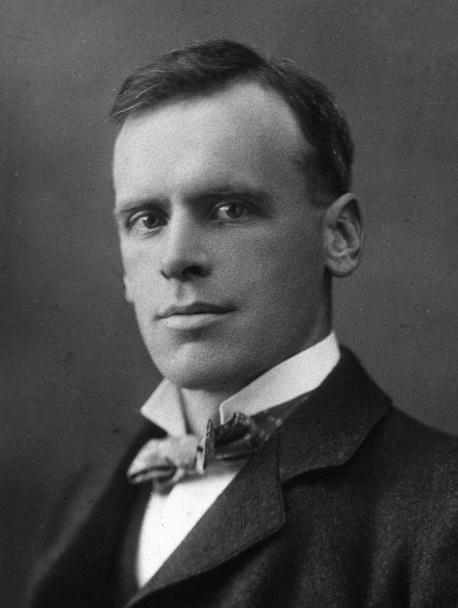Answer
425.4k+ views
Hint: Bayliss and Starling studied pancreatic secretion which was considered to be fully under the nervous influence at the time. They found that a blood-borne stimulation was released at any time food or acid was inserted into the duodenum, allowing the pancreas to secrete.
Complete answer: They named this drug secrein, and Starling proposed that the body generate other secretin-like compounds and proposed that such substances be named hormones in 1905. By doing so, he began a whole new biological field, which became known as endocrinology.

Additional information: Starling gave at least four major contributions:
1. In the capillary, water is pushed out by hydrostatic pressure through the pores in the wall and pulled in by plasma protein osmotic pressure (or oncotic pressure). Approximately balancing certain opposite forces; known as Starling's Theory.
2. Hormone secretin discovery — with his brother-in-law William Bayliss - and the term hormone presentation.
3. Analyzing the operation of the heart as a pump, known as the Frank–Starling Act.
4. Several basic insights on reinal practice. Which provides proof of the presence of the antidiuretic hormone, vasopressin.
So, the Option (A) is correct
Note: The most widely related physiological observation to Starling is the law of the heart. His studies, which spent two years of his life (1910–1912), explored how the heart decreased its production in response to more blood entering the tissue, and increased the size of the chambers during filling and the anesthetized dog used this work in an academic method known as cardiovascular planning.
Complete answer: They named this drug secrein, and Starling proposed that the body generate other secretin-like compounds and proposed that such substances be named hormones in 1905. By doing so, he began a whole new biological field, which became known as endocrinology.

Additional information: Starling gave at least four major contributions:
1. In the capillary, water is pushed out by hydrostatic pressure through the pores in the wall and pulled in by plasma protein osmotic pressure (or oncotic pressure). Approximately balancing certain opposite forces; known as Starling's Theory.
2. Hormone secretin discovery — with his brother-in-law William Bayliss - and the term hormone presentation.
3. Analyzing the operation of the heart as a pump, known as the Frank–Starling Act.
4. Several basic insights on reinal practice. Which provides proof of the presence of the antidiuretic hormone, vasopressin.
So, the Option (A) is correct
Note: The most widely related physiological observation to Starling is the law of the heart. His studies, which spent two years of his life (1910–1912), explored how the heart decreased its production in response to more blood entering the tissue, and increased the size of the chambers during filling and the anesthetized dog used this work in an academic method known as cardiovascular planning.
Recently Updated Pages
How many sigma and pi bonds are present in HCequiv class 11 chemistry CBSE

Why Are Noble Gases NonReactive class 11 chemistry CBSE

Let X and Y be the sets of all positive divisors of class 11 maths CBSE

Let x and y be 2 real numbers which satisfy the equations class 11 maths CBSE

Let x 4log 2sqrt 9k 1 + 7 and y dfrac132log 2sqrt5 class 11 maths CBSE

Let x22ax+b20 and x22bx+a20 be two equations Then the class 11 maths CBSE

Trending doubts
Fill the blanks with the suitable prepositions 1 The class 9 english CBSE

At which age domestication of animals started A Neolithic class 11 social science CBSE

Which are the Top 10 Largest Countries of the World?

Give 10 examples for herbs , shrubs , climbers , creepers

Difference between Prokaryotic cell and Eukaryotic class 11 biology CBSE

Difference Between Plant Cell and Animal Cell

Write a letter to the principal requesting him to grant class 10 english CBSE

Change the following sentences into negative and interrogative class 10 english CBSE

Fill in the blanks A 1 lakh ten thousand B 1 million class 9 maths CBSE



